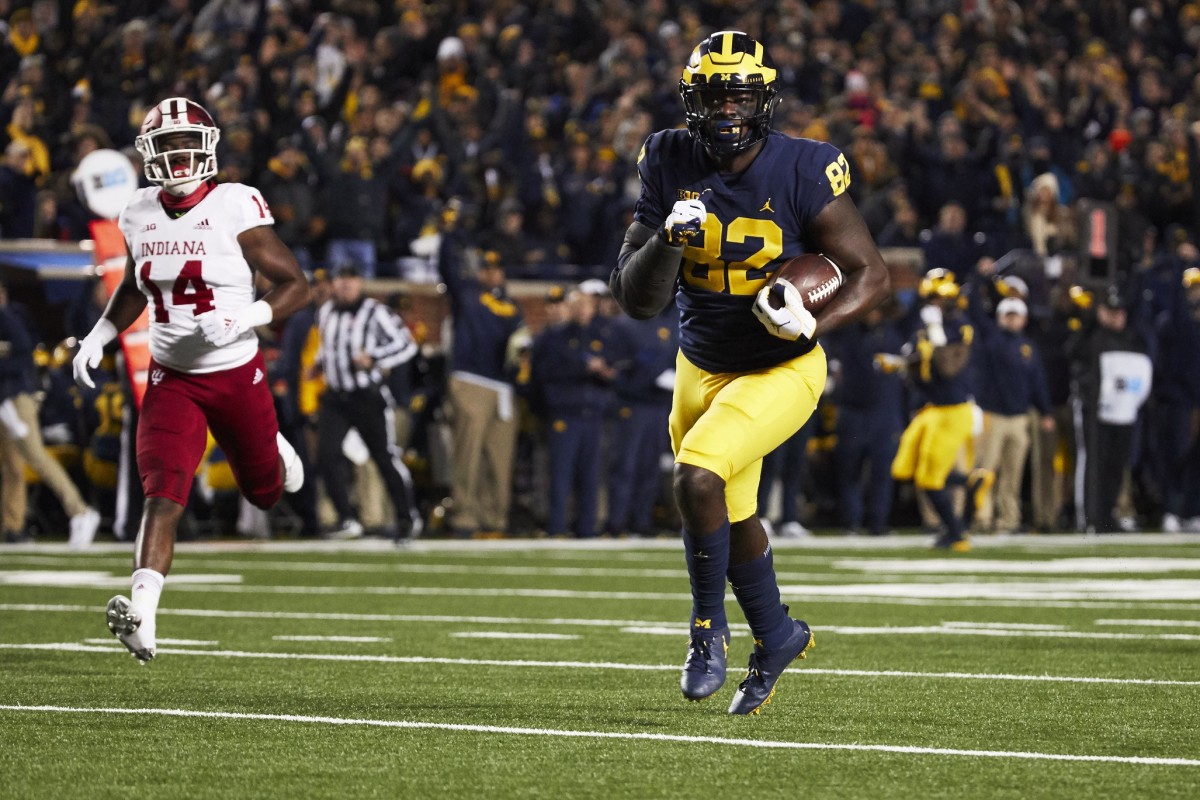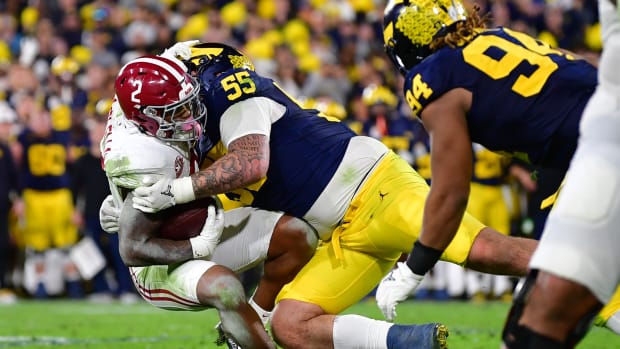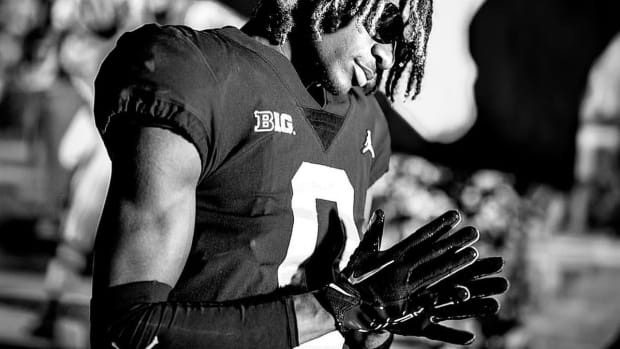Three Things To Watch When Michigan Plays Indiana

Real Or Fake: On the surface, this doesn't look like your dad's Indiana. The Hoosiers rank 18th nationally in total defense, allowing just 316.3 yards per game They rank 10th in pass defense (176.6 yards allowed per contest), 19th in completion percentage against (54.7) and 22nd in yards per attempt (6.4).
Against the run, IU is 45th (139.70 yards per game surrendered) and 45th in allowing 3.86 yards per carry. Hardly boast-worthy numbers on the latter, but overall, this appears to be a much more fundamentally-sound Indiana defense.
But is it?
Every team's ranking will be skewed by the worst teams it faces, but IU's is even more so - the Hoosiers have allowed just 535 yards total to Eastern Illinois (116 yards), Connecticut (145), Rutgers (75) and Northwestern (199). The three FBS programs have an average total offense rank of 123 (out of 130 teams).
Indiana's defense has feasted on the very worst offenses in college football. Against better offenses the results have been much less convincing.
IU allowed 398 yards (298 through the air) to Ball State, the No. 37 offense in college football. It allowed 520 yards (306 on the ground) to Ohio State, No. 4. The 107th ranked Michigan State offense had 442 yards, including 300 passing, in a win over Indiana; No. 59 Nebraska had 514 yards of offense; and No. 51 Penn State had 371.
In four matchups against Top 60 offenses, the Hoosiers have surrendered an average of 450.8 yards per game, 35.0 points per game and 204.5 yards rushing.
This phenomena is not uncommon - Michigan has allowed 316.7 yards and 25.7 points per game to three Top 60 offenses and 238.0 yards and 12.4 points per game to everyone else - but before anyone gets nervous about scoring points against this version of Indiana football, remember, they have been destroyed by good offenses.
Is U-M a good offense? The Wolverines rank 69th in total offense and 40th in scoring. Over their last four games, the Maize and Blue are up to 413.0 yards and 37.0 points per game, numbers that would rate 65th and 15th nationally. So maybe, maybe not.
By Land Or By Air: After struggling to run the football in its first five games, to the tune of 128.4 yards per contest, Michigan doubled down on its rushing attack as it tripped to Illinois Oct. 12. With a burgeoning talent in redshirt freshman Hassan Haskins and some philosophical switches up front with the offensive line, U-M had its best showing of the season: 295 yards and 6.2 yards per attempt.
A week later, out of desperation trailing Penn State 21-0, Michigan had to abandon the run for a second-half passing attack that netted the Wolverines 154 yards through the air. But the commitment to running the football returned Oct. 26 when U-M hosted Notre Dame. In slop conditions, the Maize and Blue ran for 303 yards, 5.3 yards per carry and three touchdowns. They had found their calling card.
Thus, it came as a surprise when Michigan ceded its running game to Michigan State's front seven last Saturday, implementing a pass-first plan. U-M put up 384 yards passing - its biggest number since Nov. 5, 2016 (387 yards) - while rushing just 34 times for 83 yards, 11 of those carries coming in the fourth quarter with the Wolverines already up 27-10 (and 34-10 two plays into the 4th).
So what will Michigan do tomorrow - run first or pass first? Indiana is better against the pass than the run, but as already noted, those stats are misleading. To beat Ohio State, U-M will likely need a game plan much like Michigan State, so perhaps the Maize and Blue come out firing, intending to keep its aerial-assault momentum going.
At the same time, re-committing to the running game keeps the ball out of the hands of Indiana's playmaking wide receivers, re-establishes the confidence Michigan will need to have some success on the ground against the Buckeyes and might just confuse OSU too.
Run-Stuffing Dominance: After allowing 359 yards rushing to Wisconsin in Week 3, Michigan's run defense appeared broken. The Wolverines grew from that experience, however, and they have been rising up the run-defense rankings ever since, now 17th in allowing just 106.8 yards per game. U-M is seventh in yards per carry, yielding just 2.78 yards per touch.
Beginning with Rutgers in Week 4, Michigan has been dominant against the run, giving up only 63.1 yards rushing over its last seven games, and 1.9 yards per carry.
U-M could post its seventh sub-100 yards allowed effort of the season tomorrow, as running the football is not an IU strength; Indiana sits 103rd nationally in averaging 133.7 yards per game and is 99th in yards per carry (3.83).
It helps that Michigan is eighth in sack yardage (235) but the Wolverines are expected to have some success getting to QB Peyton Ramsey so look for more positive results for U-M's rush defense.





